Not OK? That’s OK. Middle Grade Authors Provide Compassionate Portrayals of Mental Health
While there is no substitute for comprehensive mental health care treatment, many young readers may discover comfort, validation, and the strength to ask for help in the pages of these books.
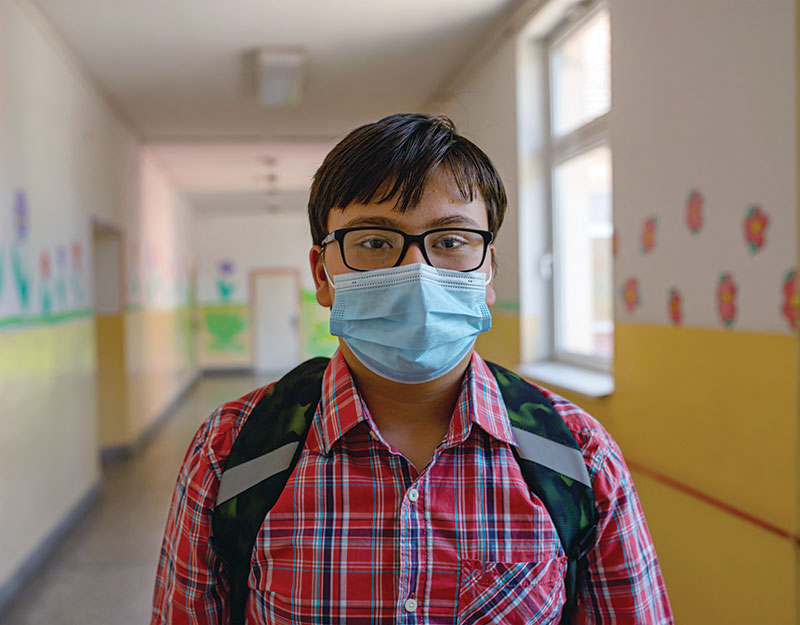 |
GettyImages/Dusan Stankovic |
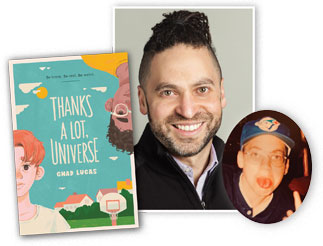 It’s no secret that middle school can be tough. Even in the best circumstances, it’s often a stressful time of change and uncertainty. Now, add in a mental health disorder, experienced by roughly one in five kids between six and 17, according to the National Alliance on Mental Illness (NAMI). Then, consider the toll of the pandemic and its attendant grief, isolation, loss, trauma, and disruption. Tweens and teens can feel overwhelmed and may not know how to discern “normal” growing pains and feelings from something that’s more serious, and when they need help. Adults are not always skilled at recognizing symptoms or knowing what to do, either.
It’s no secret that middle school can be tough. Even in the best circumstances, it’s often a stressful time of change and uncertainty. Now, add in a mental health disorder, experienced by roughly one in five kids between six and 17, according to the National Alliance on Mental Illness (NAMI). Then, consider the toll of the pandemic and its attendant grief, isolation, loss, trauma, and disruption. Tweens and teens can feel overwhelmed and may not know how to discern “normal” growing pains and feelings from something that’s more serious, and when they need help. Adults are not always skilled at recognizing symptoms or knowing what to do, either.
Thankfully, a growing field of middle grade books tackles these issues and presents readers with authentic pictures of what mental illness may look like, how it can be treated, and how very normal and common it is. “I think you’d have a hard time finding a middle grade reader who hasn’t seen someone wrestle with their mental health—whether it’s a friend, classmate, family member, or themselves,” says Chad Lucas, author of Thanks a Lot, Universe (Abrams, 2021), about a boy who starts having panic attacks when he and his brother are placed in foster care.
[Also Read: 10 Middle Grade Novels That Address Mental Health with Compassion]
By compassionately and accurately depicting mental health issues, authors help remove stigma and open the doors to conversations, which may lead to better, earlier diagnoses, treatment, intervention, and, ultimately, better mental health. It’s not an understatement to say that encouraging these conversations and depicting this reality is critical.
The staggering truth is that on average, only half of youth with a mental health condition get treatment in a given year, according to NAMI. And the effects of mental illness are wide-reaching.
Students living with a mental illness are more likely to drop out of high school or repeat a grade than their peers without a mental illness, research shows. But here’s the good news: Like so many illnesses, it’s treatable, and middle grade fiction is delivering that message to readers. These books say, hey, it’s OK to not be OK, there is hope and help, and you are not alone. These stories are also vitally important to kids who don’t live with mental illness. They can see experiences beyond their own and learn compassion and empathy.

Many of these authors draw from their own experiences. “When I was turning 17, my 19-year-old sister died by suicide,” says Barbara Dee. “Afterwards, in addition to my shock and grief, I remember feeling like I was on a different planet from my peers.” Dee used this memory of isolation when writing My Life in the Fish Tank (Aladdin, 2020), about a young girl coping with the realities and stigma of her brother’s recent bipolar diagnosis. Jimmy Matejek-Morris, author of My Ex-Imaginary Friend, (Lerner, 2021), about a child who relies on an imaginary friend after his father disappears and his mother’s bipolar disorder causes family chaos, also remembers feeling isolated. “I have been very fortunate to have access to therapy and medication,” he says. “But the lingering thoughts of loneliness are not soon forgotten and have found their way into this novel.”
Sangu Mandanna recalls being about the age of Kiki, her 11-year-old British Indian main character in Kiki Kallira Breaks a Kingdom (Penguin, 2021), when her own obsessive-compulsive disorder began. “The thing I remember most about it was how guilty and ashamed I felt,” Mandanna says. “I didn’t know what it was, or why my brain was doing these things, so I was so sure for a very long time that there was something wrong with me.” In Mandanna’s book, the pocket world Kiki creates in her sketchbooks turns out to be real. Suddenly, Kiki exists inside this fantasy realm full of wild adventures and strange characters. The character shows readers that even brave, if somewhat reluctant, warriors can have anxiety—and even people with anxiety can become brave warriors.
Lisa Allen-Ag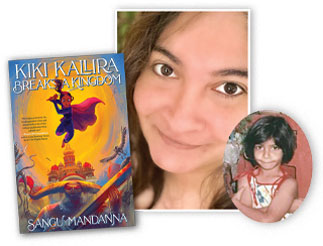 ostini also emphasizes the importance of showing readers they are not alone. “In my family and my country (Trinidad and Tobago), mental illness is not talked about, which is I think quite damaging and isolating,” says Allen-Agostini, who grew up with depression and anxiety that wasn’t diagnosed or treated until her 30s. Her novel Home Home (Random House, 2020) reflects the harm this silence can cause as her main character, Afro-Caribbean Kayla, who has anxiety and major depressive disorder, is hospitalized, medicated, sees a psychiatrist, and begins psychotherapy.
ostini also emphasizes the importance of showing readers they are not alone. “In my family and my country (Trinidad and Tobago), mental illness is not talked about, which is I think quite damaging and isolating,” says Allen-Agostini, who grew up with depression and anxiety that wasn’t diagnosed or treated until her 30s. Her novel Home Home (Random House, 2020) reflects the harm this silence can cause as her main character, Afro-Caribbean Kayla, who has anxiety and major depressive disorder, is hospitalized, medicated, sees a psychiatrist, and begins psychotherapy.
Author Ellen Oh, also cofounder, president, and CEO of We Need Diverse Books, drew from the experiences of her own children while writing Finding Junie Kim (HarperCollins, 2021). “We live in a world of fake social media–curated happiness and news cycles that use mental illness as a derogatory term constantly,” says Oh. “It’s dangerous.” Oh’s main character, Junie, deals with suicidal ideation, which leads her, thankfully, to a doctor and a therapist who help her through her major depressive disorder diagnosis. As is true for so many of these characters, mental illness is just one part of Junie’s story. As she hears stories about her grandparents’ younger years during the Korean War, her eyes are opened to activism and history.
These books describe a variety of diagnoses, treatments, and interventions. Sometimes, the main characters are coping with the diagnosis of someone in their life. In My Life in the Fish Tank, Zinny’s older brother Gabriel is hospitalized, prescribed medication, and spends time in a residential treatment facility. In My Ex-Imaginary Friend, Jack’s bipolar mother is unmedicated and experiencing a manic episode when the story opens.
Increasingly, though, the middle schoolers themselves are the ones facing mental health issues. Chinese Canadian Livy in Rosena Fung’s graphic novel 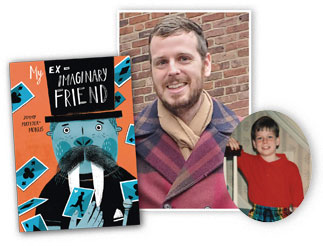 Living with Viola (Annick, 2021) is eventually diagnosed with anxiety and panic attacks, which the author has experience with. Livy “develops her own coping mechanisms throughout the book—drawing, reading, cooking with her mom—in order to calm her anxiety,” says Fung. Here, readers see the incessant nature of some mental illnesses. Fung depicts Livy’s anxiety as a character, Viola, who tags along behind her, berating her with a constant stream of lies, doubts, and worst-case scenarios.
Living with Viola (Annick, 2021) is eventually diagnosed with anxiety and panic attacks, which the author has experience with. Livy “develops her own coping mechanisms throughout the book—drawing, reading, cooking with her mom—in order to calm her anxiety,” says Fung. Here, readers see the incessant nature of some mental illnesses. Fung depicts Livy’s anxiety as a character, Viola, who tags along behind her, berating her with a constant stream of lies, doubts, and worst-case scenarios.
While many of the characters in these middle grade books see therapists, Nicole Melleby shows the sometimes-challenging task of finding the right one in How to Become a Planet (Algonquin, 2021). “It’s not easy for Pluto, and at first it doesn’t go well,” Melleby says. “It gets better, and she ends up doing well with her therapist and treatments.” Pluto, who is queer, takes medication for anxiety and depression, has seen a psychiatrist, and has a tutor to help her catch up with all the school she missed. While dealing with her new diagnosis and treatments, Pluto challenges herself to meet some small but significant goals for the summer with the help of a new friend. She learns to move beyond wanting to be “fixed” to processing that she’s still herself, no matter what is happening in her life. And just like the planet she’s named after, her definition may change but her properties are still the same. She’s still Pluto.
The writing process
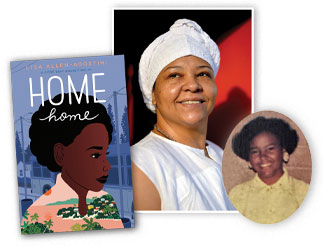 Writing about these topics for this age group is not without challenges. “You can’t baby your middle grade reader,” says Dee, whose many middle grade books tackle topics including opioid addiction, sexual harassment, and eating disorders. “If you’re writing about challenging topics like mental illness, authenticity is everything.”
Writing about these topics for this age group is not without challenges. “You can’t baby your middle grade reader,” says Dee, whose many middle grade books tackle topics including opioid addiction, sexual harassment, and eating disorders. “If you’re writing about challenging topics like mental illness, authenticity is everything.”
The stories need to balance the painful realities with hope, and they also need to be honest. Authors who successfully juggle these considerations often find the real challenge is people who try to stop these important stories from getting to students who may desperately need them.
“There are a number of publishing professionals, librarians, book buyers, and parents who believe topics like mental illness are too big or too dark for young readers, which makes it harder to get these stories into those readers’ hands,” says Mandanna.
Lucas agrees that access is an issue. “In the current atmosphere around kid lit, especially in the United States, a big challenge is the self-appointed adult gatekeepers who are trying to ban books that make them uncomfortable. Not kids—them.” When adults act as though these stories are too distressing or somehow inappropriate for young readers, they ignore the realities of the prevalence of mental health issues, and send the message that there is something wrong and shameful about children’s lived experiences.
If there is one thread that connects these books, it’s hope and help. Matejek-Morris offers this in the unusual package of a half-walrus imaginary friend, George. “Bookending the hard conversations about mental illness with amusing George chapters helped to show that even when things are tough, there is hope and humor on the other side,” says Matejek-Morris.
Fung says, “Anxiety and other mental health issues don’t just magically disappear, but you can learn to live with [them].” That’s exactly what Fung’s character Livy does, going so far as giving her anxiety a name and personality.
Melleby wants readers to know that a diagnosis isn’t an end but rather a new beginning; one that can be scary, which is OK. “Ultimately, I try to show my readers that it’s OK to have these diagnoses, that it doesn’t change who they are,” says Melleby. “I want to show them that despite it feeling so hard, there is always hope.”
Dee echoes this sentiment. “I never want to give readers the impression that recovery from mental illness or addiction is a quick, easy, fix,” she says.

“Kids need to know that maintaining mental health is a lifelong challenge.” Oh offers support, encouragement, and admiration for young readers grappling with mental illness. “That struggle is so real. But so is hope,” she says. “We have to reinforce that message and remind them that we see them, and we are proud of them, and we are here for them.”
The messages of hope, of feeling strong, of being empowered, shine through in these stories. “I hope [readers] also take away that some burdens are less heavy when you don’t carry them alone,” Lucas says.
Dealing with mental health doesn’t have to be a character, or a child’s, entire life, but rather just an accepted part of their whole self. “I want readers to know mental illness isn’t the worst thing that can happen,” says Melleby. How you feel now is not how you will always feel, these authors and characters show. And how you feel doesn’t need to be a shameful secret. Mental illness is not a character flaw or a moral failing; it’s just an illness.
While books on this topic have come a long way, there is room to explore much more. Lucas hopes we continue to see stories where mental health is not necessarily the focus, but just an accepted part of who a character is. “I think it helps normalize and destigmatize mental health when we also see anxious characters go on adventures, solve mysteries, and do all the things that other kids in books get to do.”
Melleby hopes these stories can “let these characters, let these kids, be messy and make mistakes and struggle and be the ‘bad kid’ and not let representation of mental health be clean and neat. Be honest about what mental illness looks like.” The protagonist of Melleby’s forthcoming book, The Science of Being Angry (Algonquin, May 2022), is a young girl, Joey, with anger issues.
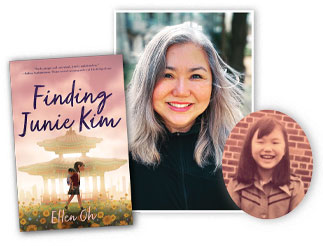 Allen-Agostini would like to see a wider depiction of characters. “In communities of color, and in poor communities, mental illness is often not acknowledged,” she says. “More books and stories about people from those communities are needed.”
Allen-Agostini would like to see a wider depiction of characters. “In communities of color, and in poor communities, mental illness is often not acknowledged,” she says. “More books and stories about people from those communities are needed.”
Dee’s next middle grade novel, Haven Jacobs Saves the Planet (Aladdin, fall 2022), is about a seventh grader with “eco-anxiety—anxiety centered around climate change, which is becoming increasingly common among middle school-age kids,” she says.
While there is no substitute for comprehensive mental health care education and treatment, many young readers may discover comfort, validation, and finally, the strength to ask for help, in the pages of these books. There is no shame in medication, therapy, or treatment, and they are not alone, these novels remind readers. For many, these messages may be the lifeline they desperately need. They will learn, like Sandanna’s Kiki, “Maybe, just maybe, my brain wasn’t some kind of monstrous thing I couldn’t trust. It was just a little different.” And different is OK.
Amanda MacGregor currently works in an elementary school library in Minnesota. She blogs at "TeenLibrarianToolbox."
RELATED
The job outlook in 2030: Librarians will be in demand
The job outlook in 2030: Librarians will be in demand
ALREADY A SUBSCRIBER? LOG IN
We are currently offering this content for free. Sign up now to activate your personal profile, where you can save articles for future viewing






Add Comment :-
Be the first reader to comment.
Comment Policy:
Comment should not be empty !!!